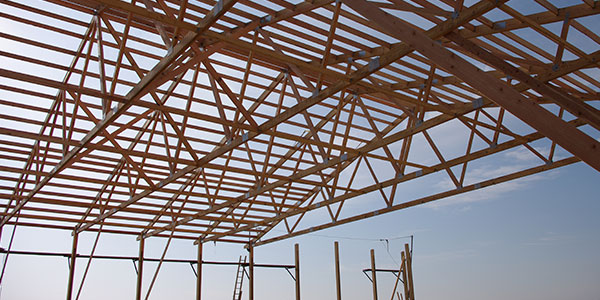Raw Lumber: We’re Picky
Lester never takes lumber selection lightly. Our engineers use a sophisticated lumber grading system to decide what wood species, grade and strength best suits each column, girt and purlin. We know what we’re buying, because we only use stamped lumber. You’ll see your lumber grade on your final contract.
Stamped / Certified
Identifies these properties:
- Design Values
- Species Group
- Lumber Mill Name or ID Number (the lumber’s origin)
- Assigned Grade (percent of wood that is free of knots and other natural imperfections)
- Moisture Content (at the time of surfacing)
- Grading Agency (agency certified by the American Lumber Standards Committee)
Treated Lumber: EPA Approved
Treated lumber delivers excellent protection against wood rot caused by insects, fungus and other wood-attacking microbes. It’s also compatible with standard hardware and steel cladding, with minimal environmental impact. Lester Buildings complies with all EPA standards.
We use three types of treated lumber, selected based on specific conditions.
Borates protects against fungus, termites and wood-decomposing organisms. Borate-treated lumber expels a low-toxicity level, which makes it safe for interior walls exposed to humans and livestock. To prevent protective properties from leaching out, this lumber is not used where there’s exposure to rain, water or ground contact.
Typical uses in Lester Buildings: sill plates, hog studs, and other above-ground areas protected from water.
Micronized Copper Azole (MCA) is a chemical that uses very fine copper particles to poison insects and microbes. Lumber treated with MCA is green from the reaction with the copper. It’s suitable for any ground contact applications.
Typical uses in Lester Buildings: splash plank
Chromated Copper Arsenate (CCA) is a chemical salt that protects against termites, microbes and other wood-boring insects. Initially, CCA-treated wood is green, but it fades to gray when exposed to sunlight.
Typical uses in Lester Buildings: nail laminated columns that are embedded into the ground.

Engineered Lumber: Superior Strength
Lester uses engineered lumber when raw lumber isn’t long/big enough to meet a building’s engineered design. We manufacture and test our engineered lumber in a controlled environment. This ensures superior strength and rigidity over solid lumber.
Laminated Veneer Lumber (LVL)
LVL is formed by layering wood veneers with waterproof adhesives, then curing with heat. The resulting wood product has a layered cross section similar to plywood, but the plies run in the same direction.
Glue Laminated (Glulam)
Glulam is formed by gluing together stress-rated lumber laminates. To form long members, the lumber can be joined end-to-end via finger joints, or face-joined or edge-joined to form large cross sections using waterproof adhesive. Glulam is the only engineered lumber that can be formed into curved or other complex shapes.

